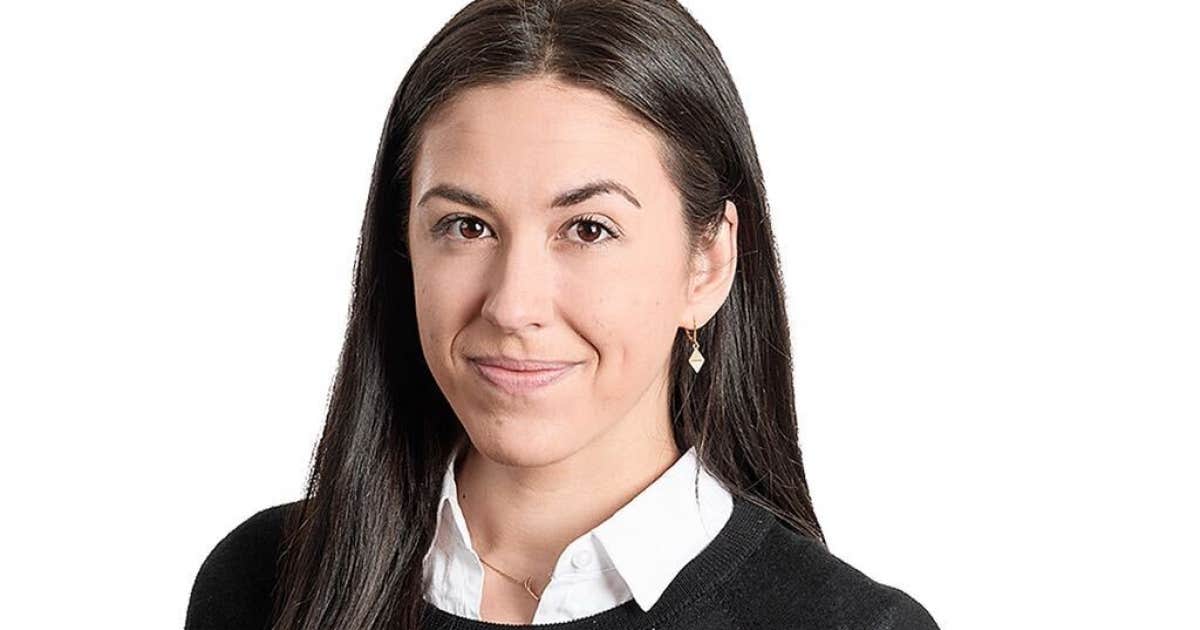Since 2014, the mural has overlooked the intersection of avenues du Parc and avenues des Pins, near downtown Montreal, at this precise location where, when you go down avenue du Parc towards the south, you have the impression of landing like a bird at the foot of Mount Royal.
It is a huge Palestinian flag on which we can read, in white letters, the inscription “Free Palestine”, painted on the exterior wall of the building belonging to Alternatives, an organization whose mission is to support social movements, here and around the world.
During the night from Friday to Saturday, the fresco was covered with graffiti conveying an anti-Hamas message (“ Fuck Hamas”) and a call for the release of Israeli hostages held since October 7. The Palestinian colors have completely disappeared behind the opaque blue paint; an erasure, in the literal sense.
Already two weeks ago, the barrier leading to the roof providing access to the wall had been sabotaged. The stunt, presumably, had been planned. The matter was immediately brought to the attention of the police – in the current context, the complaint was not taken lightly.
No one objected to the mural being repainted. Thanks to the efforts of people from Alternatives and activists from the Palestinian Youth Movement, who came to lend a helping hand in the pouring rain at the beginning of the week, then in the biting cold, in a few days, the wall had regained its Palestinian colors.
Nonetheless, the episode is full of meaning. On the phone, Yasmina Moudda, general director of Alternatives, tells me that in her opinion this is more than a simple act of vandalism. This gesture is a “deplorable consequence of the deleterious climate which has reigned since October 7, aimed at intimidating the solidarity movement with Palestine and silencing any criticism of Israel.”
In 2014, when the mural was first painted, it was also during a time of hostilities between Israel and Hamas. Weeks of intense bombing left more than 1,500 dead in Gaza (less than twenty on the Israeli side). However, Alternatives’ choice to display its solidarity with a free Palestine did not cause a stir, Yasmina Moudda told me. Times have changed, and Palestinian flags and symbols are increasingly greeted with suspicion, if not outright censorship.
For almost a decade, therefore, this symbol of solidarity with Palestine has stood on Avenue du Parc – a stone’s throw, moreover, from the famous giant portrait of Leonard Cohen, painted on the side of a building from Crescent Street. As the crow flies, barely two kilometers separate these two murals embodying cultural heritages which have always coexisted in the metropolis, and which today we try to present as fundamentally antagonistic.
The Alternatives mural is also, ultimately, the only Palestinian symbol visible in Montreal public space. I pass by it almost every day on my way to work, and I have always interpreted it not only as a symbol of the Arab presence in the city, but also as a nod to the liberation struggles back home.
Our armchair nationalists no longer say it very loudly today — have they denied this heritage? —, but there was a time when (de)colonial consciousness in Quebec ordered international solidarity: with Africa, with Latin America and, of course, with Palestine. There is all that, in this mural, the past and present of the struggles against colonial occupation, Montreal’s cultural diversity, the direct participation of citizens in the writing of the urban fabric…
On Saturday evening, the pro-Israeli graffiti was covered with a layer of white paint to prepare for the mural’s restoration. I stood at the corner of the street to gaze at the bare wall, with a sinking heart. There was, in this momentary erasure, the disturbing echo of the literal erasure of the Palestinians trapped in Gaza, bombarded with ferocity for more than 75 days.
More than 20,000 people have died in Gaza since October 7, we learned on Wednesday, according to figures provided by the Hamas government, including at least 8,000 children. If we include the people presumed dead buried under the rubble, the toll would rise to more than 26,000 people, according to the Euro-Med Human Rights Monitor organization. Added to this are more than 50,000 injured people, who are trying to heal in appalling health conditions.
Hunger, thirst, cold, the spread of diseases, constant fear: the humanitarian catastrophe that was predicted from the first day of the Israeli response against Hamas is getting worse by the hour, even surpassing the scenarios. the most gloomy. The United Nations World Food Program estimates that all Gazans are subject to “acute food insecurity”, with a quarter suffering from “extreme hunger”. Hospitals were reduced to ruins. The injured are treated among the rubble.
While firm calls for a permanent ceasefire are slow, the images reaching us are more unbearable every day. Toddlers covered in blood and dust trembling on a stretcher, looking haggard. Teenagers with their legs torn off, fathers who scream in pain when they discover their child’s face under a shroud. I felt like I was seeing all of this projected onto the freshly applied white paint.
I also wondered if, in the current context of censorship and tension, the mural could have been painted for the first time. I dread the answer. From then on, there will always be, as long as it is necessary, this message displayed at the gates of the city center: “Free Palestine”.
Columnist specializing in environmental justice issues, Aurélie Lanctôt is a doctoral student in law at McGill University.
